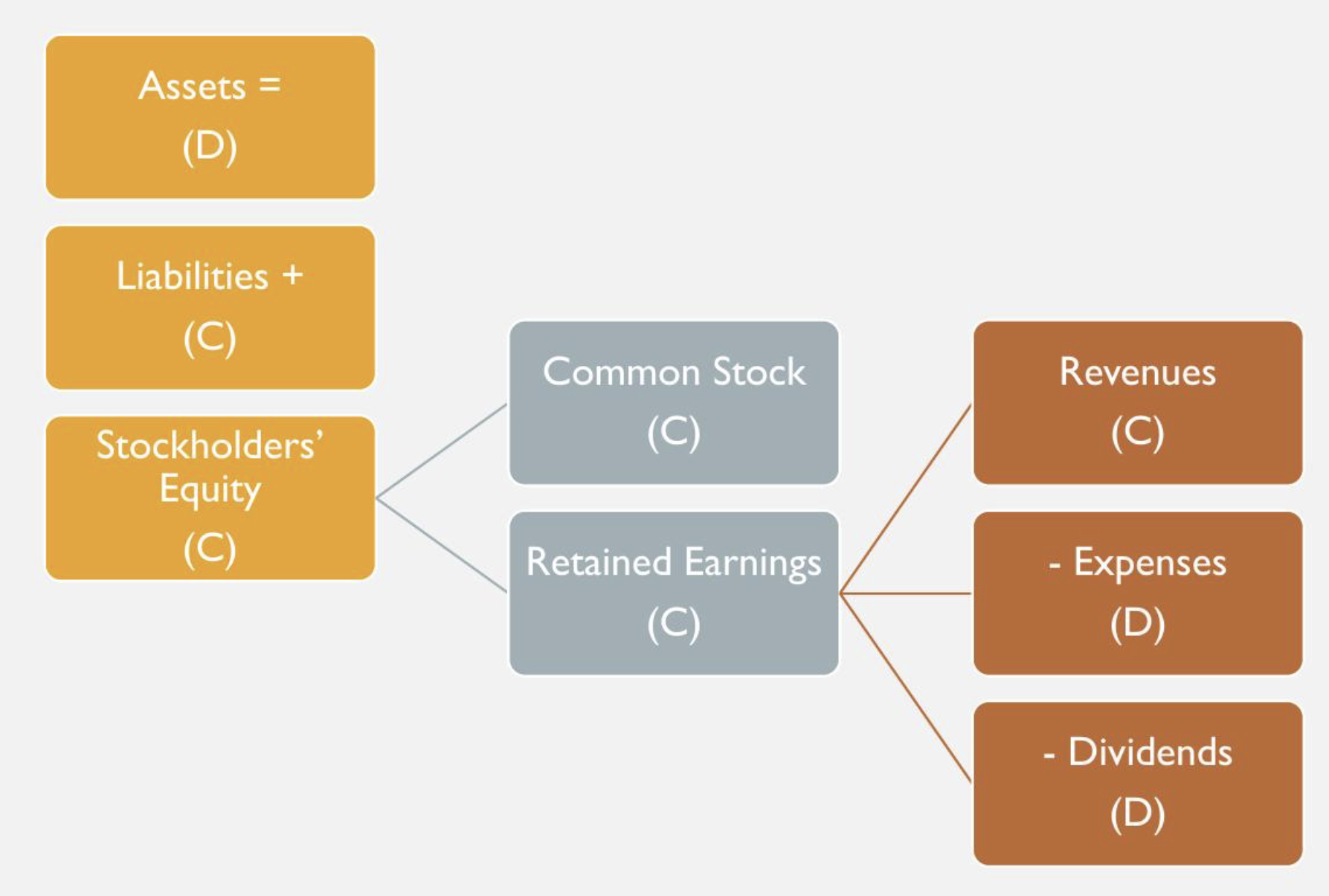Thursday, April 11th, 2024
Trying to define yourself is like trying to bite your own teeth.
— Alan Watts
MGT011A Lecture: accounting cycle - analyze, record steps
- accounting cycle
- analyze: Is this transaction relevant?
- record
- adjust
- report
- close
- accounting cycle: the analyze step
- accounting transaction: an economic event that must be recorded in accounting records
- could be anything that is a part of the accounting equation (e.g., assets, revenue, expenses, etc)
- some business activities aren’t relevant and thus aren’t included in the accounting records
- double-entry accounting: an accounting transaction affects at least 2 elements (could affect the same term — like assets) from the basic accounting equation (assets = liabilities + equity); also ensure that the two sides are in balance after the transaction
- ending retained earnings = beginning retained earnings + net income - dividends
- net income = revenue - expenses
- expanded accounting equation
- assets = liabilities + equity
- assets = liabilities + common stock + retained earnings
- assets = liabilities + comon stock + beginning retained earnings + net income - dividends
- example transactions
- person investing $30,000 in a new company’s stocks
- both assets and equity increases by $30,000; equation is balanced
- prepaying rent for company’s location
- only assets changed: cash decreased, but prepaid rent (also considered rent) increased
- taking out a loan (with interest)
- assets (cash) increases and liabilities (notes payable) increases; balanced
- the interest is considered a financing expense that is only recorded when paid
- paying salary
- assets (cash decrease) and expenses increase; since expenses are negative in accounting equation, so equation is balanced
- person investing $30,000 in a new company’s stocks
- accounting transaction: an economic event that must be recorded in accounting records
- accounting cycle: the record cycle
- once an accounting transaction has been identified, record this transaction
- concepts
- account: an individual record that increases or decreases the company’s asset/revenue/expense/liability/equity/etc
- types of accounts: cash, equipment, wage expense, etc
- chart of accounts: a list of all types of accounts within the company
- accounting doesn’t use positive/negative signs; use “debit” or “credit”
- Debit doesn’t necessarily mean it’s a good thing (e.g., a debit to expenses isn’t great), vice versa.
- normal balance: how an increase is recorded for a given type of account
- Debit an asset account to increase its normal balance. Credit an asset account to decrease its normal balance.
- Credit a liabilities or equity account to increase its normal balance. Vice versa for debiting.

- DEALER: acronym for normal balance for each account type
- debits: Dividends (equity), Expenses (equity), Assets
- credits: Liability, Equity, Revenue (equity)
- general journal: records of accounting transactions
- source document: each transaction needs to have proof that it actually happened (e.g., receipts, invoices)
- account: an individual record that increases or decreases the company’s asset/revenue/expense/liability/equity/etc
- steps
- describe the nature, format, and purpose of the account
- journalize (record in general journal)
- date
- for each transaction, the debits are listed first, followed by credits (credit entries are indented compared to debits)